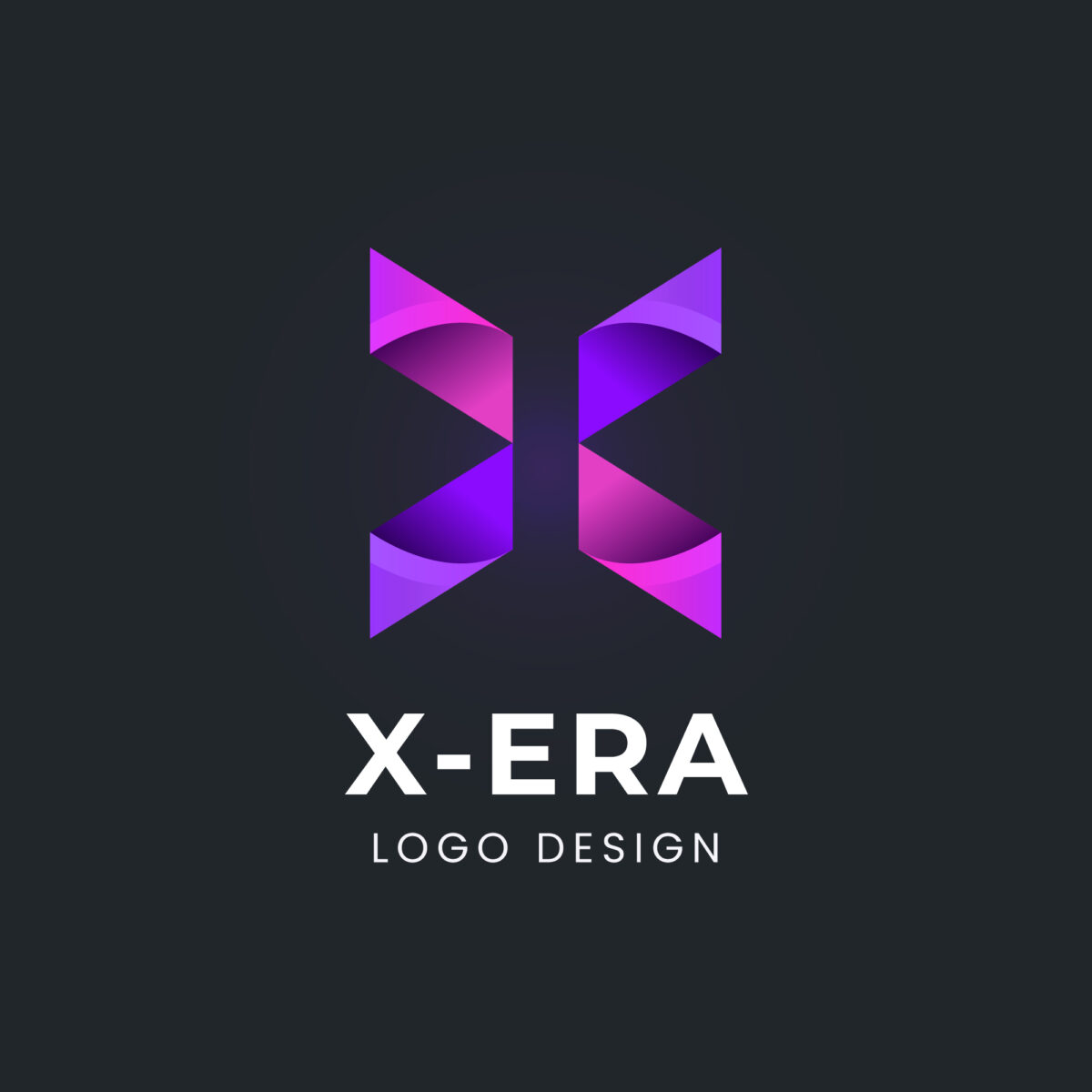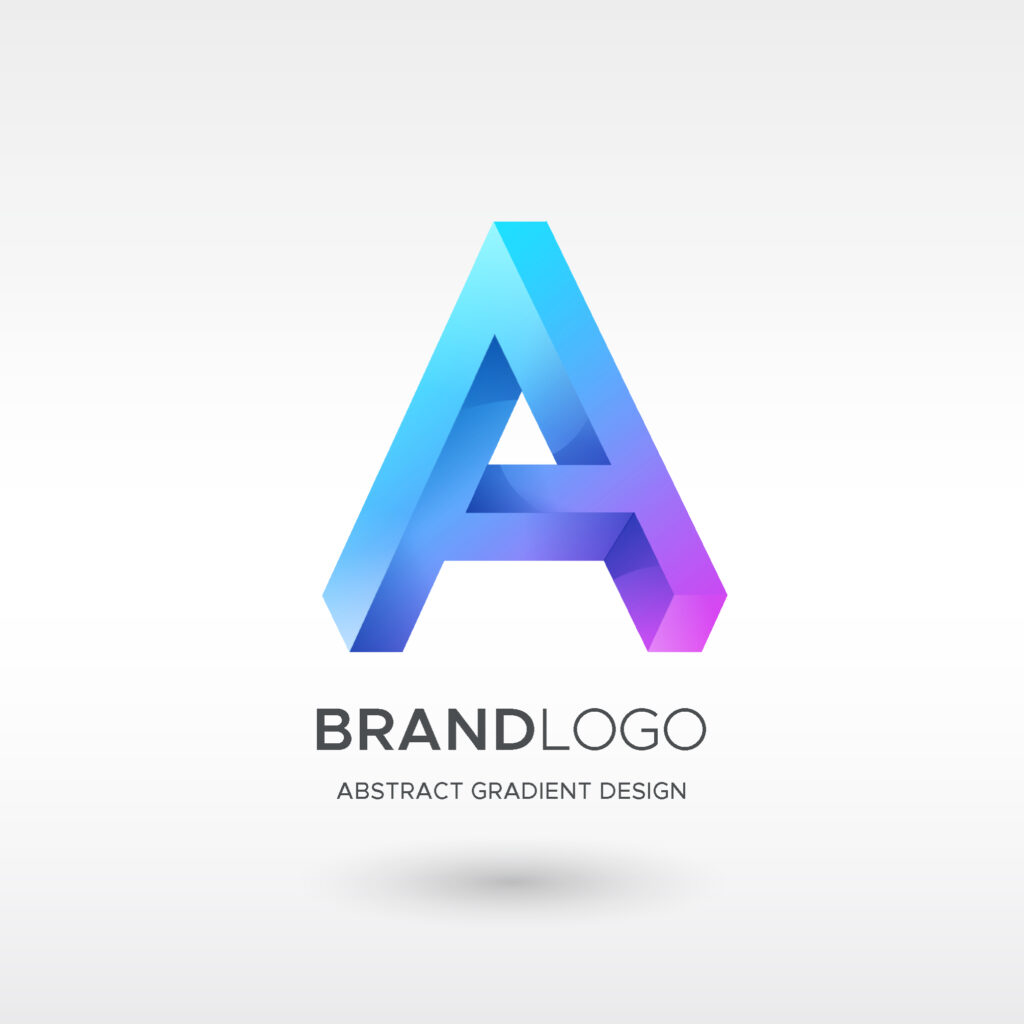
Have you ever observed the hidden arrow in the FedEx logo or the clever use of negative space in the NBC peacock? These are prime examples of how negative space can transform a simple logo into a memorable and engaging design.
Now, the question appears: What is negative space?
Negative space in logo design refers to intentionally using the background or empty space around and within the primary elements of a logo to create additional images or symbols, adding depth and dual meanings to the design.
This blog post will delve into the art of negative space in logos, providing practical tips and tricks. We will also explore various types of negative space, showcase notable examples, and offer actionable advice on incorporating this design strategy into your logos.
Let’s find valuable insights to elevate your logo designs and make them stand out!
What is Negative Space?
Negative space, often referred to as white space, is the background area around and between the elements of a composition. Logo design cleverly utilizes the surrounding space to form a secondary image or convey a hidden message.
This technique captures the viewer’s attention and enhances the logo’s memorability and engagement.
Examples of Negative Space in Logos

To truly appreciate the artistry of negative space logo design, let’s look at some outstanding examples that exemplify the above principles:
1. Toblerone Logo: The logo cleverly incorporates a hidden bear in the mountain, symbolizing the company’s Swiss heritage.
2. FedEx Logo: The FedEx logo uses negative space to generate a hidden arrow between the letters “E” and “X,” symbolizing speed and precision.
3. The Spartan Golf Club: This logo ingeniously combines the silhouette of a Spartan helmet with the image of a golfer in mid-swing. The golfer’s form is created using the negative space within the helmet, seamlessly merging two distinct concepts..
4. NBC: The NBC peacock logo is a classic example of negative space in logos. The colorful feathers form the shape of a peacock, but the negative space in the middle subtly outlines the bird’s body and head.
5. The Guild of Food Writers: This logo uses negative space to depict a spoon within a pen nib. It beautifully merges the concepts of writing and food, perfectly representing the guild’s purpose.
Guidelines for Using Negative Space in Logo Design

1. Start with Simplicity: Begin your design process with a simple, clear concept. Negative space works best when the primary design elements are simple enough. Simplicity ensures that the hidden elements are easily recognizable.
2. Think Beyond the Obvious: To effectively utilize negative space, train your mind to see beyond the obvious shapes. Sketch out your ideas and look for opportunities for the background or space within the letters to form meaningful shapes.
3. Experiment with Typography: Negative space is often used creatively in typographic logos.
Play with different fonts and letter spacing to see if the negative space between characters can form an interesting or relevant image.
4. Incorporate Dual Meanings: One of the most captivating aspects of logos with negative space is their ability to convey dual meanings. Aim to design logos that tell two stories—one with positive and another with negative spaces.
5. Balance and Proportion: Negative space should not overwhelm the primary elements of the logo. The design should remain balanced, with negative space as a complementary feature rather than a distraction.
6. Test Different Backgrounds: The effectiveness of negative space can vary depending on the background color. Test your design on different backgrounds to make the negative space elements visible and impactful.
Also Read: How to Make a Logo Transparent?
Types of Negative Space in Logo Design

Negative space can be used in many ways to create impactful and memorable logos. Selecting the right one depends on your logo’s specific requirements and the type of logo you are creating.
Here are the main types of negative space used in logo design:
1. Figure-Ground Relationship
This involves creating a visual interplay between the foreground (figure) and the background (ground) so that both elements are distinguishable and contribute to the overall design.
Example: The FedEx logo uses the figure-ground relationship to make an arrow between the ‘E’ and the ‘x’ in the negative space.
2. Hidden Images
Designers embed hidden images or symbols within the negative space of the primary design elements.
Example: The Spartan Golf Club logo features a golfer in the negative space within a Spartan helmet.
3. Double Entendre
This technique uses negative space to create logos that convey dual meanings, often representing two related concepts.
Example: The Guild of Food Writers logo uses negative space to depict a spoon within a pen nib, symbolizing writing and food.
4. Lettering and Typography
Negative space is creatively used within and around letters to form images or symbols that relate to the brand’s identity.
Example: The ‘A’ in the Adidas logo is formed by negative space within the three stripes, emphasizing simplicity and brand recognition.
5. Silhouettes
Using the negative space to create recognizable silhouettes that define the main subject of the logo.
Example: The NBC logo’s peacock is a silhouette created by the negative space in the middle of the colorful feathers.
6. Geometric Shapes
Geometric shapes and patterns are used in the negative space to add structure and a modern feel to the logo.
Example: The logo for the Pittsburgh Zoo cleverly uses negative space to form both a gorilla and a lion face within the tree illustration.
7. Abstract Forms
Abstract shapes in the negative space suggest a concept or feeling rather than a literal image.
Example: The Yoga Australia logo uses negative space to subtly form a map of Australia within the pose of a yoga figure, blending abstract art with geography.
8. Symmetry and Reflection
Creating symmetrical designs where negative space plays a key role in maintaining balance and harmony.
Example: The WWF panda logo uses negative space to create a balanced and symmetrical image of a panda, ensuring simplicity and recognizability.
9. Cut-Out Technique
This involves “cutting out” parts of the design to reveal the background, creating an illusion of depth and layers.
Example: The Hope for African Children Initiative logo uses cut-out negative space to form an African continent within a silhouette of a child’s face.
10. Negative Space within Positive Space
Incorporating negative space within the design’s positive elements adds depth and meaning.
Example: The USA Network logo cleverly integrates the letters ‘U’ and ‘A’ with negative space within the ‘S,’ making the logo compact and visually engaging.
By understanding and applying these types of negative space in logo design, you can create visually appealing logos rich in meaning and creativity.
Negative space is a powerful tool that can turn a simple design into a work of art, helping your brand stand out in a crowded marketplace.
Why Use Negative Space in Logos?
Logos with negative space incorporate a layer of sophistication and intrigue, challenging the viewer to look deeper. This dual imagery can make the logo more versatile and meaningful, often embodying the essence of a brand in a visually concise manner.
By employing negative space, designers can express complex ideas in a simple, uncluttered format that resonates with audiences on various levels.
Incorporating Negative Space: Best Practices
1. Balance Positive and Negative Space: Ensure a harmonious balance between positive and negative space in your logo design.
2. Plan Early: Include negative space in the initial design stages to integrate it seamlessly into your logo.
3. Think Creatively: Embrace unconventional designs and bold ideas to make your logo unique and memorable.
Conclusion
Negative space in logos is a powerful tool that, when used thoughtfully, can elevate a design from good to iconic. It demands a mix of creativity, foresight, and precision.
By understanding negative space and how to manipulate it effectively, designers can create visually striking logos rich in meaning.
Ready to transform your brand’s identity with a logo that speaks volumes through the masterful use of negative space? At Vince Logo Design, we specialize in creating visually striking and meaningful logos that capture the essence of your brand.
Our expert designers understand the power of negative space and know how to leverage it to craft innovative and memorable logos.
Uncover More Information:

Vince Logo Design is a distinguished digital marketing agency, specializing in crafting compelling brand identities and optimizing online presence. We are your partners in creating impactful digital strategies that drive results.
Get in touch.Articles
- Top 10 SEO Benefits of Responsive Web Design in 2025
- 8 Best CMS for Small Business in 2025: Pick the Popular
- 5 Best Hosting for Small Business Websites
- Affordable WordPress Website Design: Best Service Provider
- Custom Design Vs Template Website: Which One Is Best?
- Fix My WordPress Site: WSOD, Redirect & Site Maintenance
Get Free Consultancy
Fill the following form and receive a guaranteed response within 48 hours.
We have worked with world's leading brands











